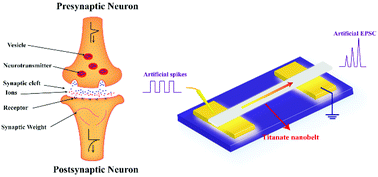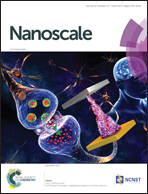Oxygen vacancy migration/diffusion induced synaptic plasticity in a single titanate nanobelt†
Abstract
Neuromorphic computational systems that emulate biological synapses in the human brain are fundamental in the development of artificial intelligence protocols beyond the standard von Neumann architecture. Such systems require new types of building blocks, such as memristors that access a quasi-continuous and wide range of conductive states, which is still an obstacle for the realization of high-efficiency and large-capacity learning in neuromorphoric simulation. Here, we introduce hydrogen and sodium titanate nanobelts, the intermediate products of hydrothermal synthesis of TiO2 nanobelts, to emulate the synaptic behavior. Devices incorporating a single titanate nanobelt demonstrate robust and reliable synaptic functions, including excitatory postsynaptic current, paired pulse facilitation, short term plasticity, potentiation and depression, as well as learning-forgetting behavior. In particular, the gradual modulation of conductive states in the single nanobelt device can be achieved by a large number of identical pulses. The mechanism for synaptic functionality of the titanate nanobelt device is attributed to the competition between an electric field driven migration of oxygen vacancies and a thermally induced spontaneous diffusion. These results provide insight into the potential use of titanate nanobelts in synaptic applications requiring continuously addressable states coupled with high processing efficiency.



 Please wait while we load your content...
Please wait while we load your content...